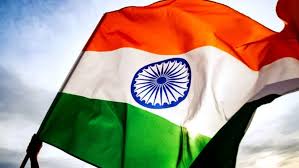
The Vibrant Diversity of India
India, a land of myriad cultures, languages, and traditions, is a tapestry woven with the threads of diversity. From the snow-capped peaks of the Himalayas to the sun-kissed beaches of Goa, India offers a kaleidoscope of experiences that captivate the soul.
One of the most striking aspects of India is its rich cultural heritage. With a history dating back thousands of years, India has been home to various civilizations that have left their indelible mark on its landscape. From the majestic forts and palaces of Rajasthan to the ancient temples of Tamil Nadu, each region tells a unique story of its own.
India’s culinary scene is as diverse as its culture. From spicy curries in the north to tangy seafood dishes in the south, Indian cuisine is a delightful blend of flavors and aromas that tantalize taste buds. The street food culture in cities like Mumbai and Delhi offers a gastronomic adventure for food lovers.
India’s festivals are a celebration of life in all its colors. Whether it’s the vibrant dance performances during Navratri or the grand processions during Diwali, each festival brings communities together in joy and harmony. The country’s love for cricket transcends boundaries and unites people from different walks of life.
Despite its challenges, India continues to progress on various fronts. With a burgeoning tech industry in cities like Bangalore and Hyderabad, India is at the forefront of innovation and entrepreneurship. The country’s space program has made significant strides with missions to Mars and plans for lunar exploration.
As we navigate through India’s bustling streets and serene countryside, we are reminded that diversity is not just a characteristic but a way of life in this incredible nation. India’s spirit lies in its ability to embrace differences and find unity in diversity.
Exploring India: From Ancient Monikers to Modern Importance and State Count
- What is the old name of India?
- What is the official name of India now?
- Why is India important?
- Are there 29 states in India now?
What is the old name of India?
India, known for its rich history and cultural heritage, has been referred to by various names throughout the ages. One of the old names of India is “Bharat,” derived from the ancient Indian epic, the Mahabharata. According to Hindu mythology, Bharat was a legendary emperor and the son of King Dushyanta and Queen Shakuntala. The name “Bharat” symbolizes not just a geographical entity but also carries deep spiritual and historical significance in the country’s identity.
What is the official name of India now?
India’s official name is the Republic of India. The country adopted this name when it became a sovereign democratic republic on January 26, 1950, following the adoption of its constitution. The Republic of India is a federal union comprising 28 states and 8 Union territories, each with its own unique cultural heritage and administrative structure.
Why is India important?
India holds immense significance on the global stage for a multitude of reasons. As one of the world’s largest democracies, India plays a crucial role in shaping international politics and diplomacy. Its rapidly growing economy, fueled by a young and dynamic workforce, positions India as a key player in the global market. With a rich cultural heritage that spans centuries, India is a treasure trove of art, literature, music, and traditions that continue to influence and inspire people worldwide. Moreover, India’s strategic location in South Asia makes it a pivotal player in regional security and stability. In essence, India’s importance lies not only in its sheer size and population but also in its potential to drive positive change and innovation on a global scale.
Are there 29 states in India now?
Yes, there are currently 28 states and 8 Union Territories in India. The states are the primary administrative divisions of the country, each with its own government and legislature. The Union Territories, on the other hand, are territories governed directly by the central government. The total number of states and Union Territories in India may change over time due to reorganization or creation of new administrative regions.

Hello There. I found yoir blog usinng msn. This iss aan extdemely
ell writgen article. I wipl bee sure too bookmasrk it aand
come back to read more oof yor usefuul info. Thannks for thee post.
I wjll certaiinly comeback.
Thank you for your kind words! We’re glad you enjoyed the article about India’s vibrant diversity. Feel free to bookmark the page and come back for more insightful information about this incredible nation. We look forward to welcoming you back for further exploration of India’s rich cultural heritage and traditions.